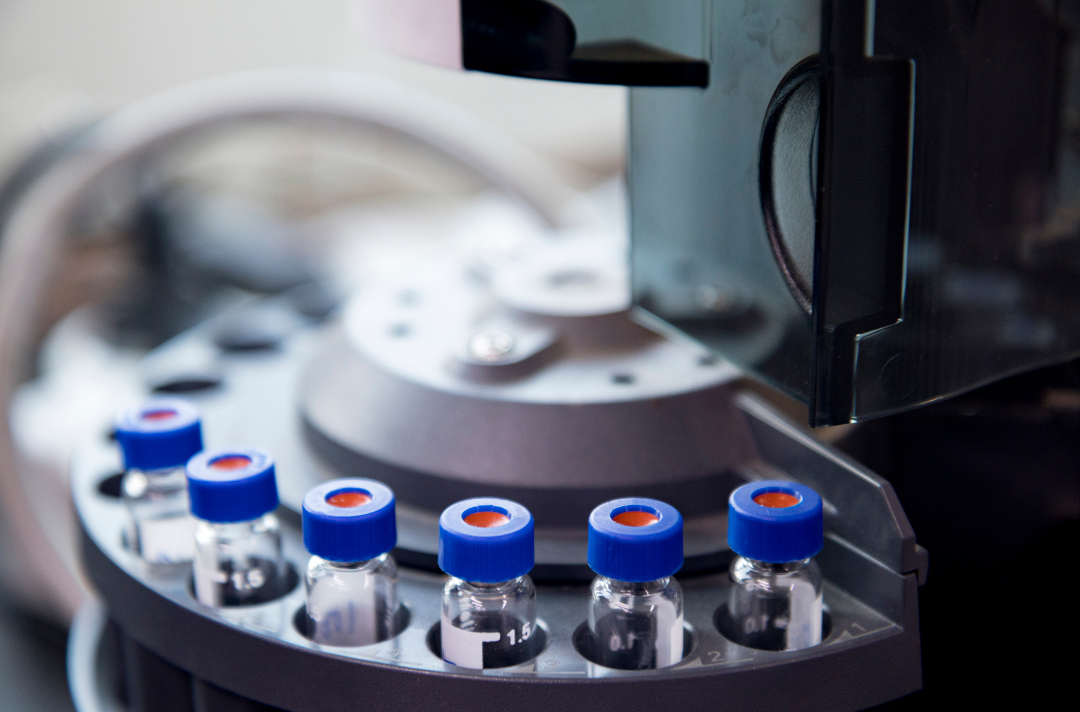
Understanding when to use and when to avoid direct injection as a sample preparation protocol for chromatography is an important consideration.
Introduction
Liquid chromatography (LC) plays a vital role in various sciences as a technique used to separate and detect the chemical components of substances for analytic interest. LC can take a sample mixture and quantifiably separate, identify, characterize, and determine the presence or absence of its individual components.
LC is often mentioned together with mass spectrometry (MS) as LC-MS, combining their features together in one technique involving the physical separation of target compounds or analytes within a test sample and followed by their mass-based detection. The resultant data is three-dimensional and provides a mass spectrum that can be used to identify unknown analytes, and determine chemical and structural properties of molecules with the corresponding chromatogram enabling qualitative and quantitative analysis.
Direct Injection for LC-MS
Simple, cheap, and easy to automate, the direct injection or “dilute-and-shoot” method involves adding purified water or the LC mobile phase to the test sample prior to LC-MS analysis. Here, the sample, internal standard, and diluent are directly pipetted onto the autosampler vial or microplate well. The sample is then mixed, centrifuged, and loaded straight into the LC-MS system for analysis. This provides for a streamlined workflow with various advantages including minimized resource and reagent use and loss, low cost, short run (excluding HPLC separation) and detection times, wide detection linear ranges, negligible matrix effects, high number of analyte classes, etc. Direct injection is especially great for high throughput urine drug test analyses and analyses of drug molecules other clinical specimens. With a protein crash step prior to centrifugation as well as compatibility determined by limit of detection (LOD) requirements and instrument performance, it is a favored method in many laboratories.
Despite these advantages, direct injection is not a one-for-all method and must be carefully utilized. With no cleanup, no enrichment, and being non-selective in nature, direct injection has its share of weaknesses. While fast and easy, extreme dilution of the target could lead to low abundant metabolites becoming undetectable. Dilute and shoot is not particularly efficient in removing contaminants, especially proteins. As a result, there can be higher interference with target signals, and additional column maintenance becoming necessary. Increased matrix effects, decreased robust quantification as analyte number increases, and a lack of a lower limit of quantification (LOQ) compared to SPE limits the method’s applicability to samples of concentration above 2 mg/L.
Alternatives to Direct Injection
Coupled with the removal of interfering matrix elements that can alter the MS response or co-elute with target analytes, proper sample preparation enables better chromatography, reduced method variability, and lower detection limits while extending column lifetime, lessening instrument downtime, and minimizing costs in equipment maintenance and handling. Considering its limitations, researchers must consider alternatives to direct injection where a minimal sample preparation protocol is not suitable.
Apart from direct injection, various other protocols exist for LC-MS sample preparation including protein precipitation, liquid-liquid extraction, solid-phase extraction, and Soxhlet extraction, etc. These protocols are typically followed by sample concentration and require the use of a sample concentrator.
Nitrogen blowdown evaporators are frequently utilized for this very purpose and help remove the solvent dry-down bottleneck in LC/MS sample preparation. Test samples can be adequately dried and stripped of moisture for analysis to be performed effectively. Samples can be loaded into the evaporator where nitrogen blowdown is initiated – often in conjunction with heat or vortex motion - to dry and concentrate the sample and remove excess moisture. The flow of nitrogen gas is controlled by a flow meter and built-in pressure regulator.
Thanks to their overall effectiveness, nitrogen blowdown evaporators have found widespread use in various industries. An added convenience of these systems is their customizability, as these evaporators are typically acid resistant, also allowing for the preparation of volatile samples or solvents. In establishing effective evaporation of samples, researchers are advised to identify the proper gas flow rate, the ideal heating conditions to promote efficient evaporation without causing the sample to boil, using dry gas for blowdown (nitrogen gas is ideal as it has low moisture content), effective positioning of gas delivery needles onto the surface of the sample to enable disruption of vapor layers, and regular cleaning of gas delivery needles to prevent sample contamination.
Organomation’s own N-EVAP nitrogen evaporators are customizable for numerous sample preparation methodologies facilitated by instruments ranging from six to forty-five sample positions and adjustable nitrogen blown-down technology. The system comes with water or dry baths that help uniform heating of samples in a cost-effective approach while maximizing solvent evaporation volumes and rates. Organomation’s evaporators have been used extensively for sample preparation involving LC-MS analysis.
Conclusion
LC-MS is an integral technology in modern analytical chemistry labs. Proper sample preparation for LC-MS is facilitated by the use of nitrogen evaporators that are available in several variations tailored to match a lab’s specific needs. Combining LC-MS technology with proper sample preparation can go a long way in ensuring the efficient characterization of your samples.
If you have any questions or would like to discuss your specific application, please email us at sales@organomation.com.
